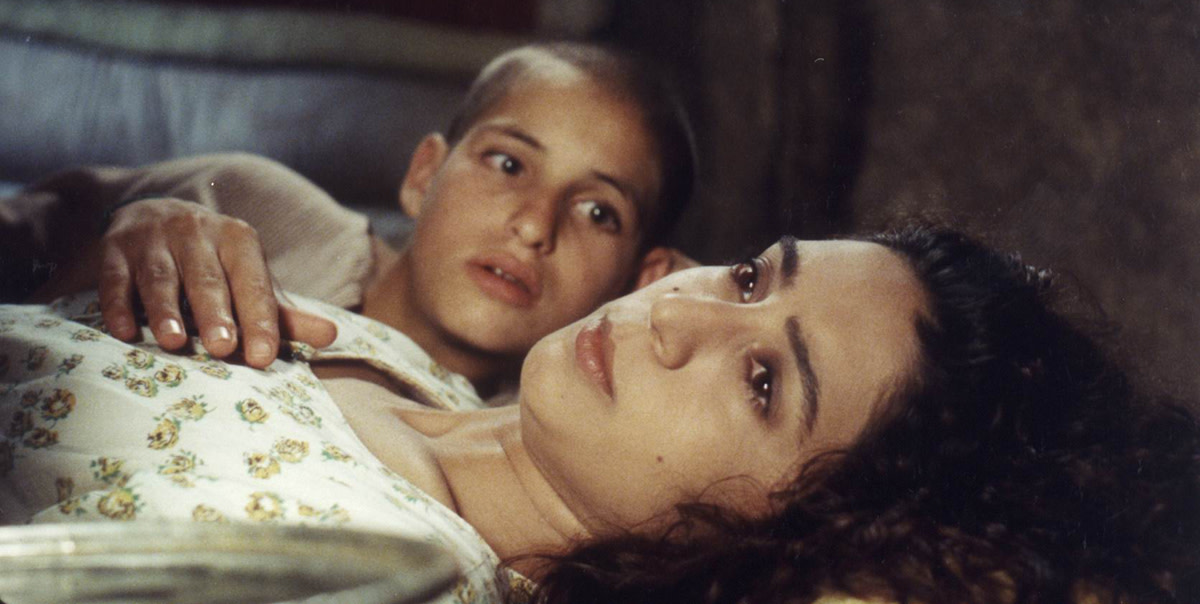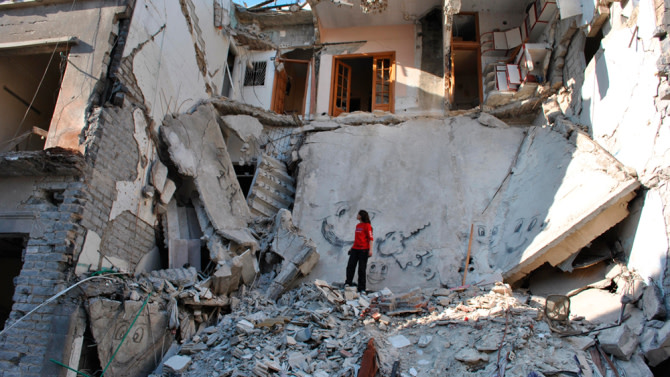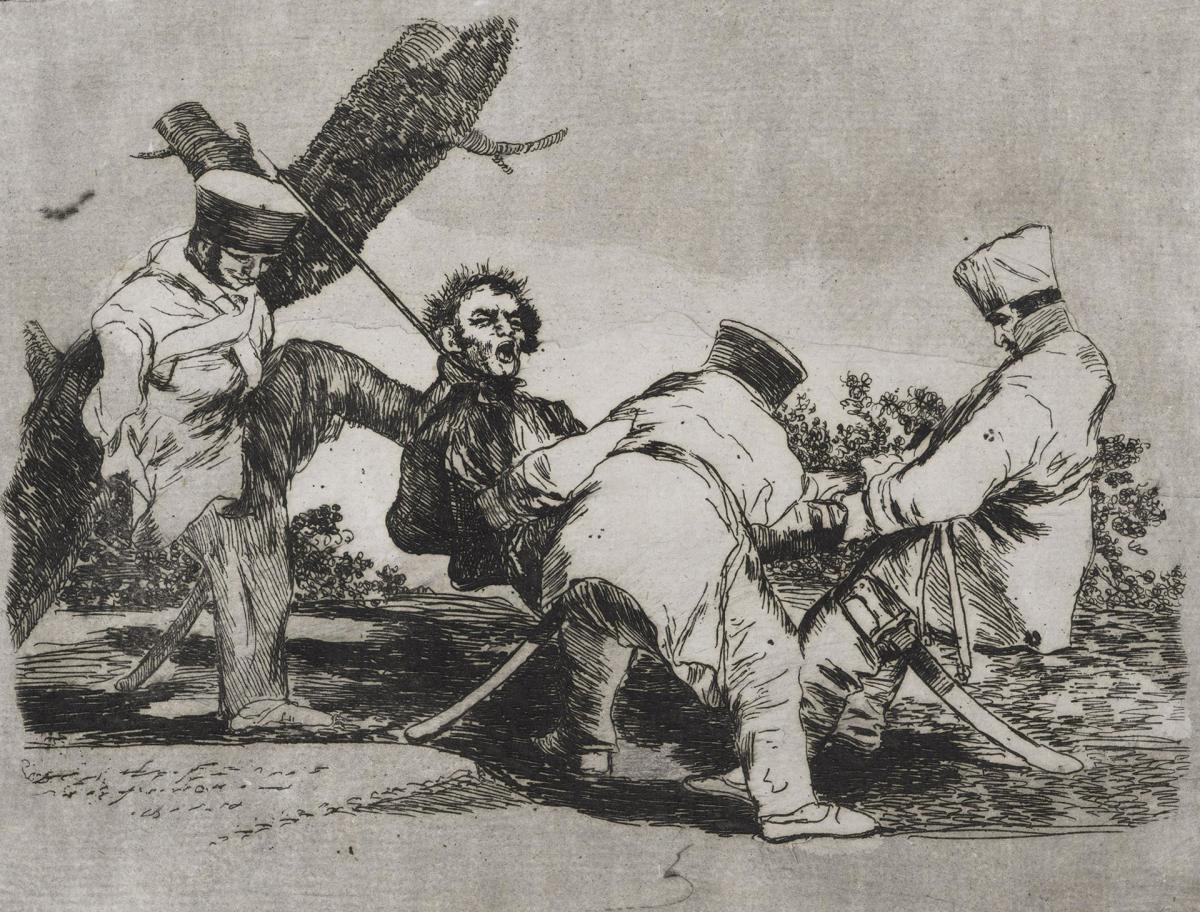The Review/ Feature/
Truth In Many Guises: The Films Of Ossama Mohammed
TIFF Cinematheque's Syrian Cinema programme explores the brutality of images and the cinematic art of war
“Even truth needs to be clad in new garments if it is to appeal to a new age” Georg Christoph Lichtenberg
__Running from August 26 to September 4 at TIFF Bell Lightbox, Syria Self-Portraits: Chronicles of Tyranny, Chronicles of War includes moving dramas, hard-hitting documentaries and visually dazzling fables that attest to the rich variety of voices and diversity of experiences within a tragically embattled country. Explore our programming for our series and buy advance tickets here. __
Ossama Mohammed is an exiled Syrian filmmaker living in Paris and his films play a pivotal role in the Syria Self-Portraits: Chronicles of Tyranny, Chronicles of War programme playing at the TIFF Bell Lightbox. A man cut off from the turbulence and war that has ravaged his homeland, his work acts as a bridge between the West and the inner workings of the Syrian spirit. His films are elusive, their meaning dispersed throughout symbol and metaphor to create a multifaceted and layered visual allegory, a language of motion, shape and sound.
Nowhere is that more apparent than his most recent film, Silvered Water, Syria Self-Portrait (2014), a collage documentary made up of the combined efforts of “1001 filmmakers” capturing the raw details of the Syrian War. Mohammed’s narrative films, Stars in Broad Daylight (1988) and Sacrifices (2002) also exhibit the evolution of this painterly approach to cinematic creation. These films are harsh polemics against the Ba’athist regime and the philosophy that undergirds the dictator’s power. Mohammed unpacks these concepts within the domestic sphere to present the terrifying intimacy with which tyranny operates under a cult of personality.
On the surface, Stars in Broad Daylight is about a pair of weddings in the Alawi family who live in the gorgeous coastal farmland of Syria. However, both events go horribly wrong, the ritual of unification twisted inside out to act as catalyst for domestic disaster. The film evokes the emotional reality of existence in a dictatorship via the hierarchy of the Alawi family, who live under the thumb of their eldest brother. The family’s struggle for an authentic existence is a microcosm of the machinations of Syria’s dictatorship. The brother, this de facto patriarch, is also a direct visual analogy: he is a dead ringer for former President Hafez al-Assad. He works for the local telephone company, manning the switchboard. He listens in on the family’s calls and uses that information to manipulate them into following his designs. Through this device, Mohammed insinuates the omnipresence of the surveillance state.
This uncanny resemblance is riven throughout the bones of the film, which explores the extremes that toxic patriarchy will undertake to maintain its stranglehold on power. The brother is controlling, manipulative and stingy — each act fuelled by the need to assert his domination. When events spiral out beyond his immediate control, he resorts to cruelty and violence, the final tools of the oppressor.
Sadly, the film’s pastoral setting provides no succor. There is no mitigating effect from nature and the wholesome simplicity of milking goats or plucking eggs from beneath stout hens. Instead, it is a beautiful prison. The fields only isolate and allow this toxic patriarchy to consolidate and fester. There’s nowhere to run.
By twisting images of weddings and nature against their immediate, superficial readings, Mohammed shatters myth and takes the first steps towards establishing his own visual language. He plays images against the grain, often reversing or at least tweaking one’s initial interpretation of a scene, to tremendous effect. What ought to produce health invokes despair, what ought to provide stability instead harbors destruction. Within the world of Stars, nothing cannot be trusted.
We see this captured in a scene during the wedding celebrations. Two cherubic little boys with gaping eyes, the patriarch’s twin sons, sing for the gathered family members. In rhyming couplets, they espouse the values of joining the Liberation Army to crush Israel. These impossibly cute little kids with saccharine voices end their song with a triumphant chant of “Long live Daesh! Daesh!” and it is utterly chilling.
Stars is a very biting portrait of authoritarian power and the toll that it takes upon healthy social interactions. Surveillance and manipulation permeate every moment and establish a poisonous irony to any exchange. Were we overheard? Will the patriarch react with arbitrary, excessive violence? Can human beings live beneath the constant gaze of the oppressor?

Sacrifices takes a half step away from cinematic realism and towards allegorical fable, where a rich symbolism replaces the direct semiotics of Stars. The result is a radically different film, despite being composed from familiar subject matter. Like Stars, Sacrifices takes place in a rural region of Syria and concerns itself with the myriad emotional undercurrents of a family and its relationship with an overbearing patriarchal figure.
However, the film’s plot burgeons from the death of the patriarch. It’s about a grandfather who seeks to bequeath his name upon one of his three male grandchildren as an act of symbolic coronation. He cannot choose between them and in his hesitation, all is lost. He dies before choosing a namesake, leaving the children nameless. For a time, this frees the children from their fate and allows them to grow into their own personalities, liberated from the weight a name can bring. Beneath the wide open sky and the thick boughs of an ancient tree, the children grow up into radically different people.
However, as adolescence nears, social expectations for the boys begins to blossom. The adults are unable to transcend the limitations placed upon them, so when one boy exhibits the inchoate traits of authoritarian cruelty, his parents grab hold of these tendencies as a lever for elevating their social status. Even though the three children choose radically different philosophies to navigate life (restraint, love, cruelty), they are constrained by their grandfather’s legacy of authoritarian violence. Only those who live in accordance with that status quo can achieve their desires. One cannot escape the conditions within which one lives.

In an interview with The New Yorker, Mohammed admits that the three boys represent facets of his own personality. After painting a precise and chilling image of authoritarian power as an externality in Stars, the filmmaker wanted to direct that same lens of inquiry within. The main characters of Sacrifices serve as a point of introspective departure, asking the viewer to locate and reconcile the “dictator.” This thirst for power resides within us all.
Take for instance, the beginning of Sacrifices. The film opens with a scene in which the father of one of the grandchildren leaves home to fight in the war against Israel. When he eventually returns, he is covered in mud, symbolizing the weight of his war-torn experiences. He gathers the family to relate a story of war and destruction foreign to their pristine, pastoral paradise. Livestock poke their noses in the doorway and the rest of the family fluff cotton to stuff into their mattresses. This man fought bravely but lost, and was abandoned by the military. A building collapsed on him, and it took him three days to be pulled from the rubble, for want of fuel to power the bulldozers.
Instead of blaming the state, he adopts this cruelty as a necessary function of power. He decries the family’s lack of contribution to the war effort, and forces the three nameless boys to drink oil. He needs to see which one of them will do anything for power. It is the only way to establish a new patriarch. They must imbibe suffering and acquire the strength to mete it out. Then, he gives them a TV.
In Sacrifices, there is a transference between the individual and the state, but it is not a deterministic model. One must choose to uphold the illusion of control embedded within the status quo of an authoritarian regime. The machine doesn’t perpetuate itself. Cruelty doesn’t spring from the air and the trees, it comes from the hearts of those who choose to embrace it as an effective tool.
This introspective turn is a tad surprising after the cold, visual evisceration of the state in Stars, but it acts as an allegorical fable that draws an intimate connection between the individual and the state. Whereas Mohammed’s first film has the tendency to “other” political violence within an unsympathetic character (placing it at a safe, abstract remove), Sacrifices makes it personal and thus, makes it emotionally real. If we can locate the dictatorial aspects of our own psyche, then we can begin to unpack and understand the varieties of sublimation which allow this toxic behaviour to manifest. And if we can begin to understand authoritarian violence from within, perhaps we can learn how to change it into something else without resorting to force ourselves.

In the semantic and emotional evolution from Stars to Sacrifices, Mohammed digs deeper, like a psychiatrist, into the source of violence that powers the Ba’athist regime. With Silvered Water, co-directed by Wiam Simav Bedirxan, this development takes a brisk step forward. It’s about as radical a formal departure from his previous two films as one could imagine. For starters, Silvered Water is a documentary spliced together from the collected cell phone footage of “1001” amateur Syrian filmmakers: protesters marching in the street, soldiers camped out in a sniper’s nest, torture scene participants, mourners at a funeral in the bed of a moving truck and awestruck citizens watching bombs fall from the heavens.
Layered on top of this raw, unvarnished glimpse into the Syrian war is Simav’s narrative. She is a teacher and secular woman in Homs who stayed through the siege to act as a warden for the children left in the city. The camera is her shield and her lifeline, capturing the destruction and decaying beauty of life in the war-torn city. Finally, interwoven throughout both the collage and the nonfiction narrative is a conversation between Mohammed and Simav. It is cued with Facebook instant-messenger notifications and Mohammed’s meditations on the impact exile has had upon him.
Suffice to say, there’s a lot going on in this film.
On the one hand, it’s an impressionistic juxtaposition of images, from a newborn babe and its newly snipped umbilical cord to an imprisoned young man crouching in the corner, naked, between beatings that still stain his brow. There’s a jarring diagonal slash of rivers of light and sound tearing the screen apart, only to coalesce into a panicked cavalcade of concrete and feet. The bright sun leaps off the dust and the tumult of shoes and sandals kicking free until a lake of bright, red blood gushes out from beneath the cameraperson and a woman screams: “Don’t be scared, Imad! Pray! Pray!” Silvered Water tests our capacity to absorb images of such brutal intensity.
“For the regime, a camera is a weapon,” Simav says, before noting that she had to smuggle hers through 500 kilometers in the hood of her jacket just to get one into Homs. Simav guides the lens towards the delicate drops of dew that collect on a chain-link fence with the very same care as she captures the stunning moment when a bomb drops upon the city and smoke and rubble blossom into the sky. In between these snapshots, we meet her students, such as Omar, a lovable tyke who guides us through the shelled city. The tension mounts with each heartbeat of sympathy. What terrible fate shall befall this boy?
Throughout the film, we are constantly reminded of the movie’s status as an artifact via the choice of narration and the artful intertwining of collage and essay. It helps us weather a storm of images by transforming it into art. The formal attributes of frame and edit provide the distance necessary to stop us from being utterly overwhelmed. It also disabuses us of any notion of clean objectivity of the “news” — these aren’t images for consumption but images that confront us with the reality of Syria and demand our complete human attention. We are brought into intimate sympathy with the camera people, on many sides of the conflict, and we must deal with that. Lastly, we are reminded that these images are for us, for those on the outside to peer within. They are not for those within the conflict, because they have been curated and interpreted like any work hanging on the pristine white walls of a gallery. These images are for the West.
The cognitive dissonance between immediate sympathy and structured artifice also relates to Mohammed’s own exile, which features as a theme in the film. He has lived in exile, in Paris, since May 9, 2011, the day of the Syrian uprising and anti-government protests in Damascus. Part of the distance embedded in the structure of the film is his own, fighting against the desire to be in his homeland and share the suffering of his people. Mohammad’s dislocation is essential to the film. It is what allows him to act as a sympathetic bridge between the viewer and the birth of this new form of cinema. He is a midwife of meaning.

The arc of growth between Stars in Broad Daylight, Sacrifices and Silvered Water reminds me of the painter Francisco Goya, particularly his Disasters of War prints. Goya was the highest ranked painter in the Spanish court and was well-known for his finely detailed portraits. During the Peninsular War of 1808, he turned to rough sketches and minimalist captions to render the terror unleashed upon his nation. In his sketches, corpses hang from trees. Men, women, and children are slaughtered and raped and the countryside burns. He drew it all in a swift, new style with captions such as: “This is how it happened” and “I saw this” and “Why?” Unlike most painters, he chose to portray war as an avenue for suffering, instead of glory. The harsh efficacy of his line work evokes the grim realities of war far better than any precise painting ever could.
In order to render this new insight, a new style was necessary.
Ossama Mohammed is trying to convey a multiplicity of truths - political, psychological, and emotional - all intertwined together. Each new truth requires a different visual configuration to bring it into the light. With each film, he relentlessly reinvents the interpretive role that his images provide to emphasize different facets of the Syrian experience. Mohammed is trying to create new cinematic languages to interpret and reveal the various human truths that nestle within the brutal horrors of tyranny and war. Sometimes, sly caricatures of the glorious leader and introspective allegories no longer do the trick. When war is unleashed upon a people, the artist must step up and present a whole new art.